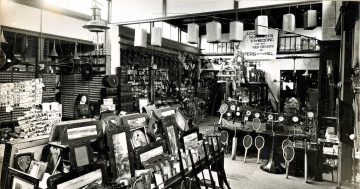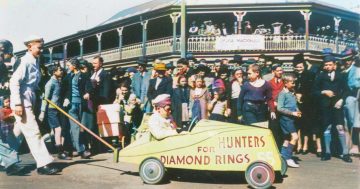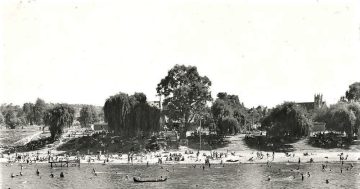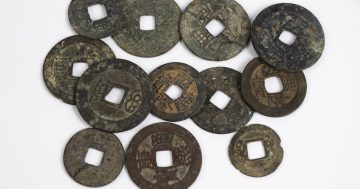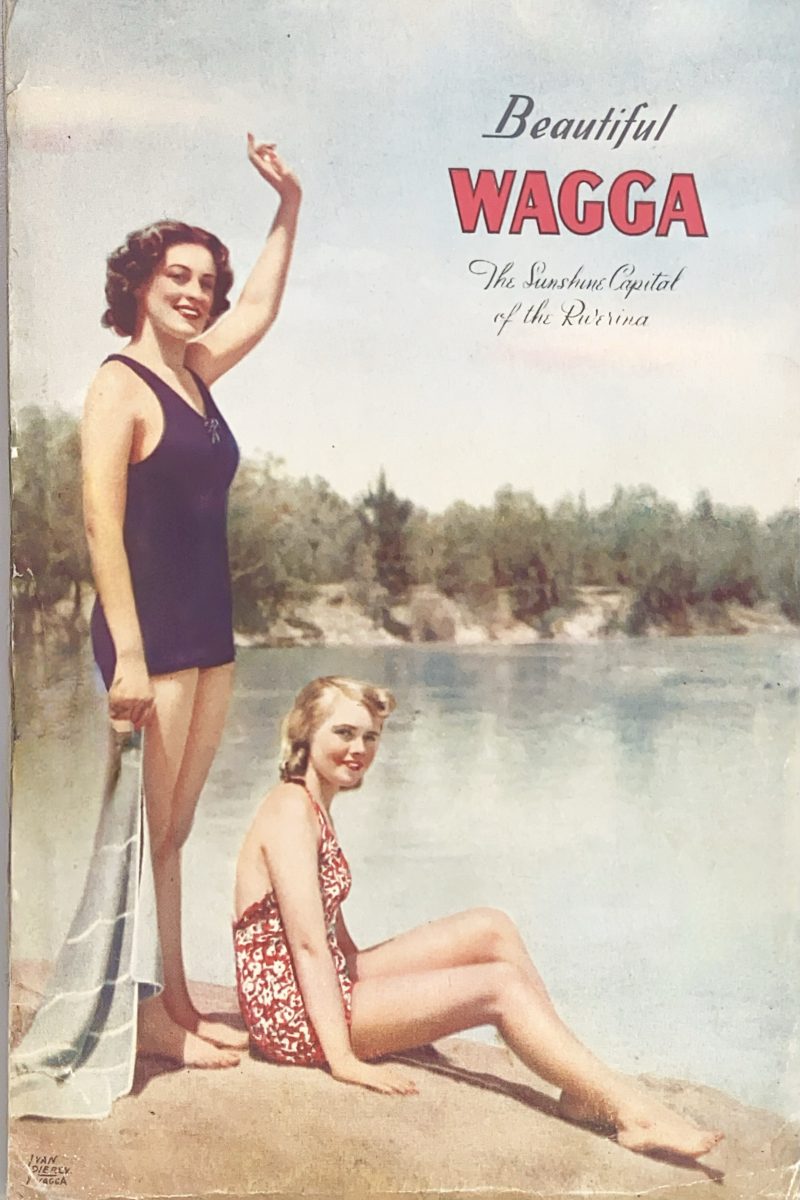
The Beautiful Wagga cover image from a 1941 Hunter Bros brochure. Photo: Ivan Piercy.
In May 1941, Wagga’s iconic Hunter Bros (Hunters on the Hill) published what we would now describe as a tourist brochure to promote Beautiful Wagga: The Sunshine Capital of the Riverina.
Featured on the cover, like a pair of wartime pin-up girls, is a hand-coloured photo of Miss Shirley Beaver and Miss Betty Coveny enjoying Wagga’s sandy beach as the surprisingly blue waters of the Murrumbidgee flow past.
The brunette Miss Beaver stands in her navy one-piece swimsuit, blue striped towel in one hand, the other held aloft waving a greeting with a warm grin as the blonde Miss Coveny sits in her red floral halter-neck bathers and smiles shyly at photographer Ivan Piercy.
According to the Advertiser in 1941, “the publication, which is probably the best work of its kind ever produced in regard to Wagga, contains a large number of excellent photographs of the town, its fine gardens, and other subjects of interest” before concluding that “the book should prove very attractive to visitors who desire to carry away with them a memento of their visit to this town, and is also likely to be much in demand for sending to friends in distant parts or to the forces overseas”.
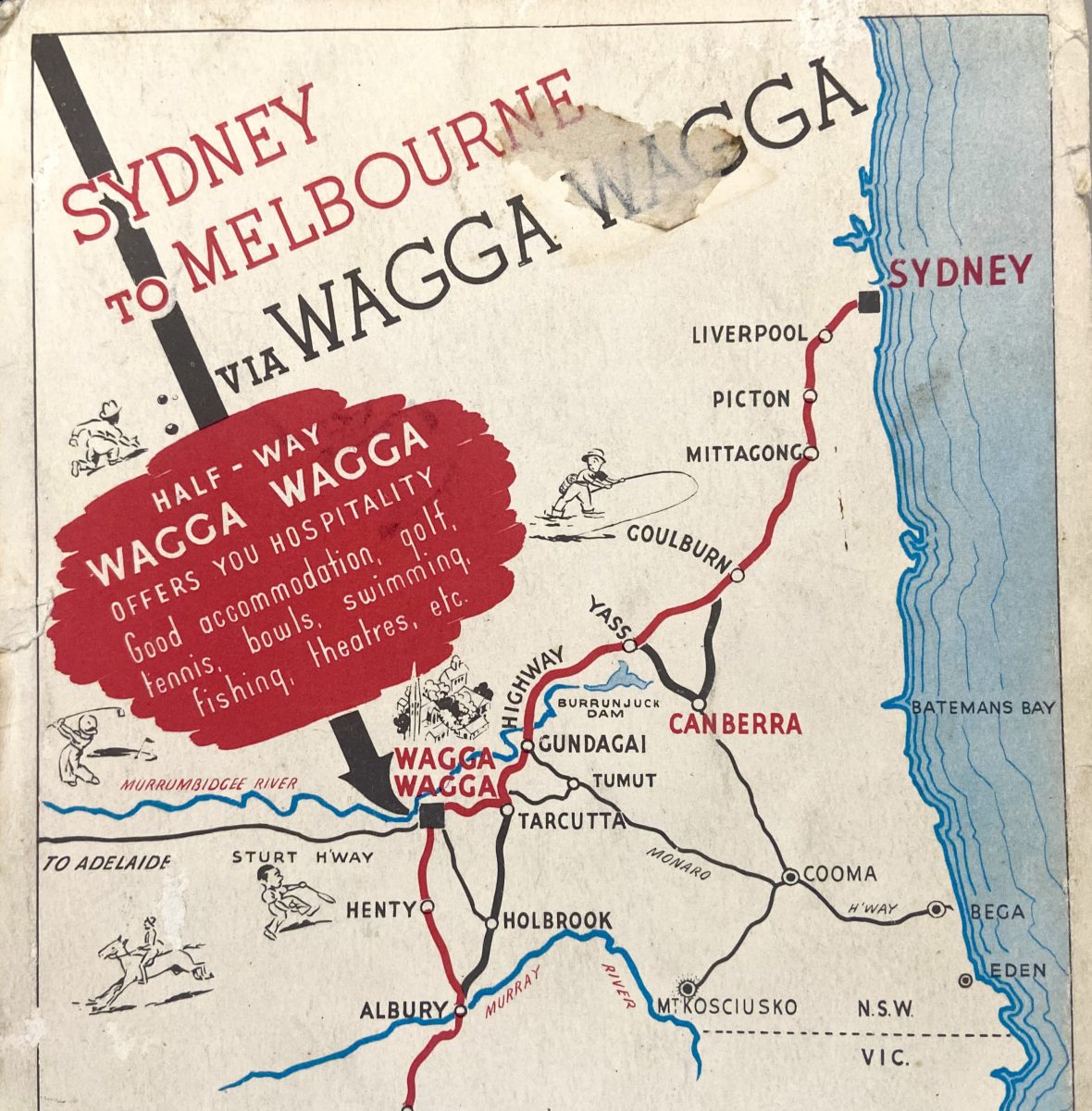
A mud map promoting Wagga as an attractive halfway stop between Sydney and Melbourne. Photo: Supplied.
The coloured back page features a mud map highlighting Wagga’s location between Sydney and Melbourne, declaring “half-way Wagga Wagga offers you hospitality – Good accommodation, golf, tennis, bowls, swimming, fishing, theatres, etc”.
While the photos inside are black and white, they offer a glimpse into wartime Wagga, the architectural aesthetic and how the town wished to present itself.

The Victory Memorial Gardens in 1941. Photo: Ivan Piercy.
There is not a single mention of Wagga’s Aboriginal past or the continued presence of the Wiradyuri people. The story instead begins with the “intrepid explorer” Charles Sturt, who “discovered the site on which Wagga was eventually established” and points to the cairn that remains down at Wagga Beach as the city’s “foundation stone”.
As you would expect, the “abundance of water” and the Murrumbidgee River feature prominently in the introduction: “This beautiful stream provides Wagga with delightful bathing and camping sites. The angler will find his efforts rewarded with the capture of Murray Cod and other indigenous fresh water fish.”
It boasts of the “twelve thousand ornamental trees” that line 72 miles of streets, twenty-three hotels, bus and taxis, theatres and “an attractive camping reserve”.
Wagga’s population is reported to have doubled since the 1920s, with the number in 1941 (excluding the military) listed as 14,000.
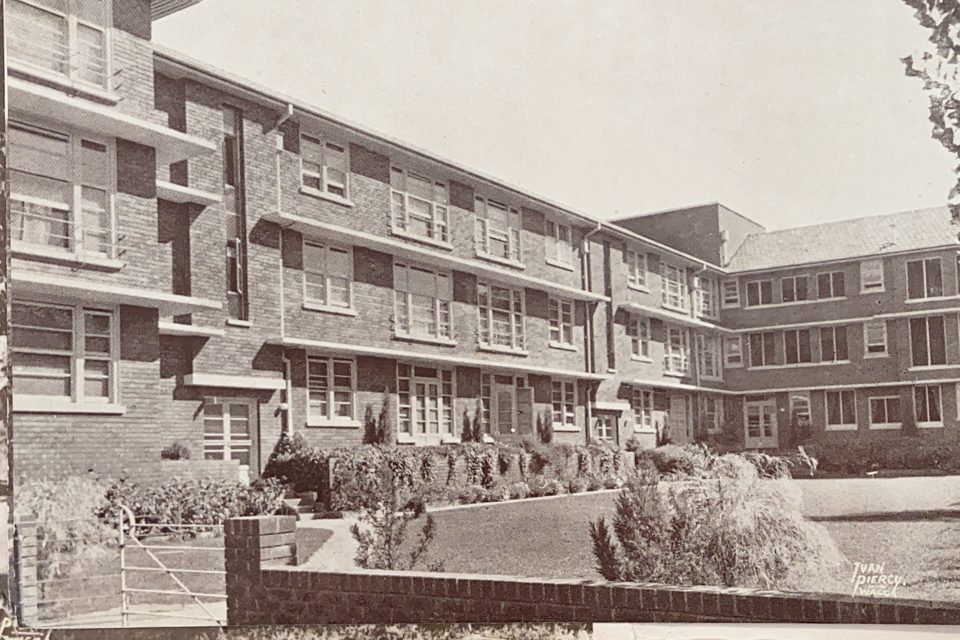

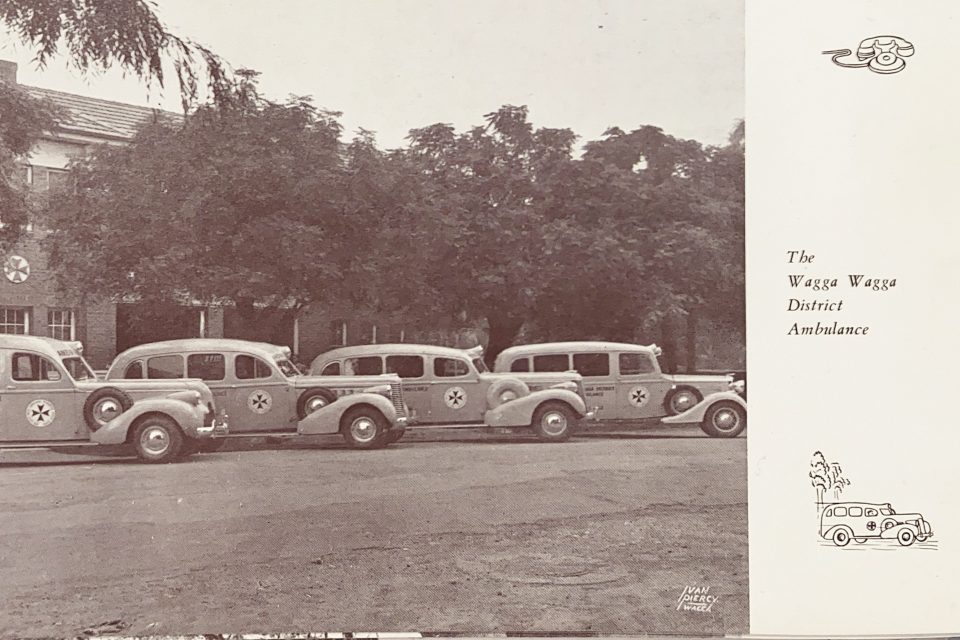
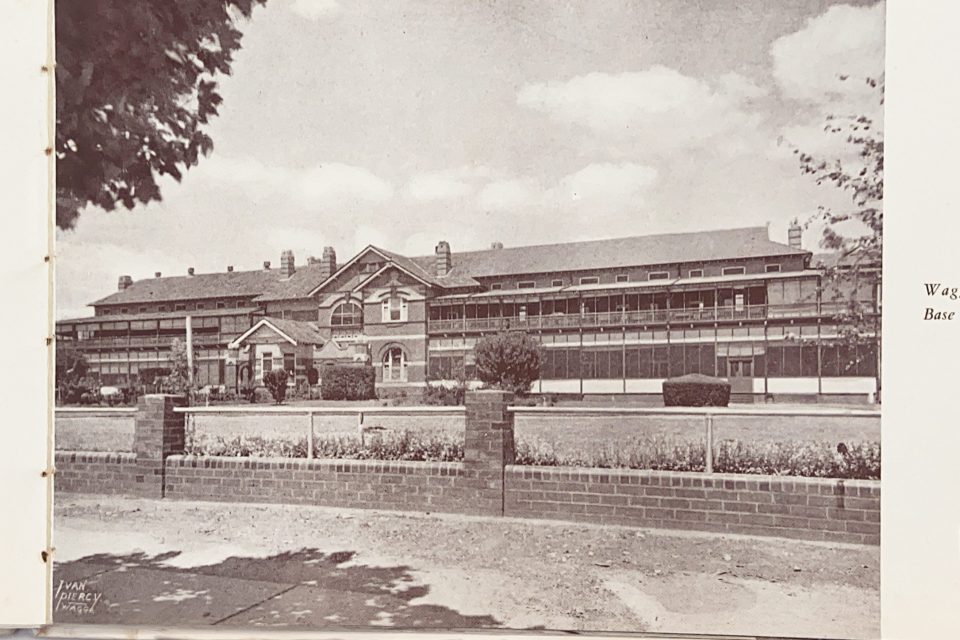




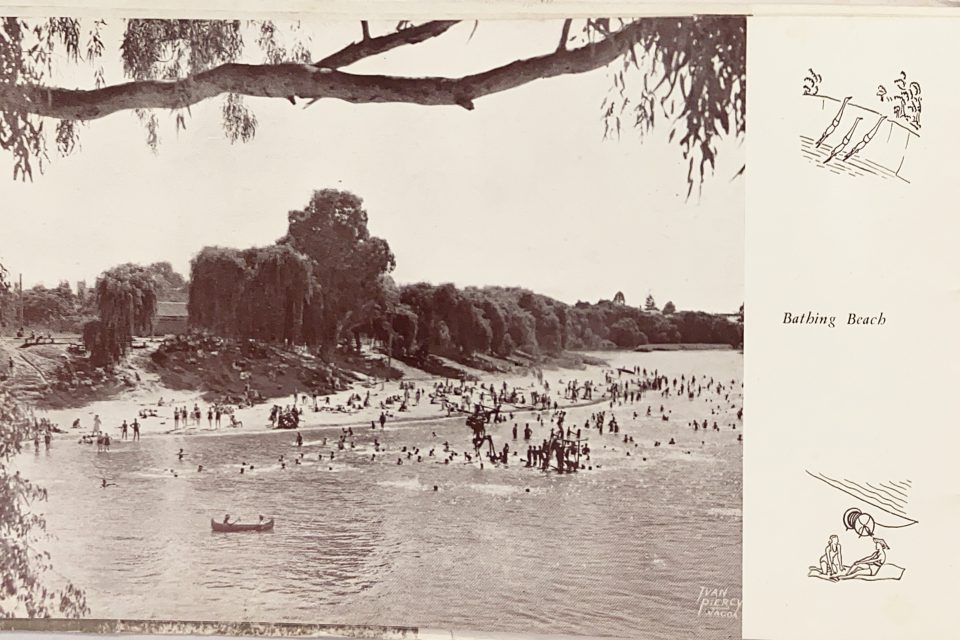
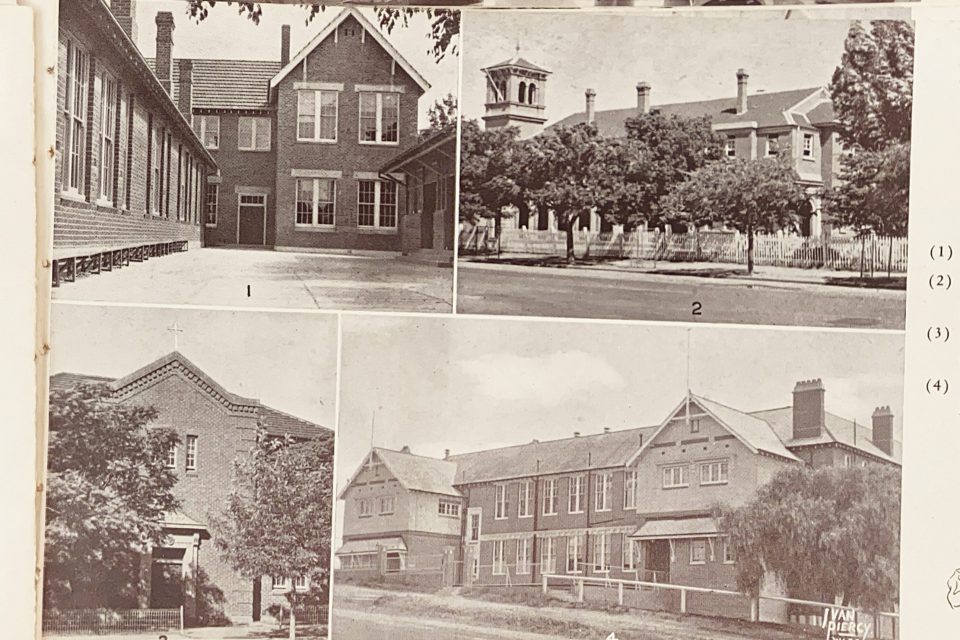
Along with many “garden scenes” and modern buildings such as Henley Flats, there are schools, the old hospital, ambulances in Johnston Street, Gurwood Street with a row of young trees, and a view of Lake Albert from Willans Hill without a house in sight.
Without doubt, a look back in time to Wagga’s 20th-century ambitions to create a thriving modern city.
Thanks to Geoff Burch from the Wagga Wagga & District Historical Society for the information and for letting us browse the brochure.







